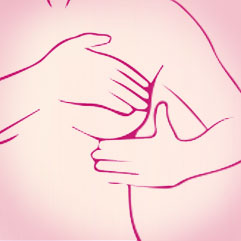DON'T PATRONIZE: TOKYO BUST EXPRESS REVIEWS SG FOR POST-NATAL SAGGING BREASTS
 |
| Bust Enhancement Options |
You've read info about sagging
breasts and tips to firmer, perkier breast, etc., but what about saggy breasts
post-pregnancy after the skin is stretched out. There are some myths
surrounding this and we want to clear the air about them.
Numerous new mummies patronise Tokyo Bust Express from whom we have gathered a fascinating list of myths to bust! No pun intended.
Numerous new mummies patronise Tokyo Bust Express from whom we have gathered a fascinating list of myths to bust! No pun intended.
Myth#1 Breastfeeding deflates
breasts
This is a very common thought.
While pregnancy can affect breast shape and volume, no scientific study has
ever proven that breastfeeding can cause your breast to sag.
For all of the attention that
they attract, breasts are really pretty straightforward. These are the changes
that happen to the basic components pre- and post-pregnancy:
- Fat. The amount and distribution of fat determine
the overall size and shape of breasts. When women are younger, their
breasts have less fat and are mostly comprised of glands.
- Glands. Responsible for producing milk, these milk glands
expand and shrink in response to the hormone changes that accompany different
stages of the menstrual cycle and pregnancy. They are mostly concentrated
in the top outer portion of each breast, which is why this area can get
tender and achy in the pre-menstrual phase. During pregnancy and before
menstruation, the glands in the breast expand and become more sensitive.
After pregnancy and menopause, these glands shrink and but the breast remains
as mostly fat tissue in composition.
- Connective Tissue. This is the tissue responsible for the
stretching you are experiencing. Breasts are supported by ligaments (a
type of connective tissue) and skin. As breasts expand and then shrink
during pregnancy and with age, the skin and ligaments that support the
breasts can, as you've noticed, become stretched out, resulting in breasts
heading south.
Myth #2 Exercise my muscles enough liao
Because the muscles in the
chest do not support the breasts, exercises that claim to "firm up"
your chest area can indeed make the pectoral muscles under the
breasts stronger and firmer, adding support for the breasts. But they don’t
necessarily grow your bust line.
Myth #3 Surgery is the only answer!
Unfortunately, surgery is not
the perfect solution to tighten and lift breasts that sag from the effects of
pregnancy, weight gain or loss, time, and/or the ageing process. A woman's
breasts change as she ages — just like the rest of her body changes. It's a
normal process and happens to everyone. Even "breast lift" surgery,
which typically removes extra skin and tissue from the breast and tightens and
lifts the remaining skin, or adds implants to maintain structure, is only a
stopgap measure — "lifted" breasts will once again respond to the
call of gravity as the skin and ligaments are gradually stretched over time.
Rest assured that the size and
shape of breasts change with age for every woman, whether she's been pregnant
or not. If you are considering surgery, be sure to consider the costs and
benefits of the procedure. Going under the knife comes with its own set of side
effects. Otherwise, stick to natural procedures that come with minimal risk and
a fraction of the cost compared to surgery.
Visit our blog weekly for Tokyo
Bust Express review.



Comments
Post a Comment